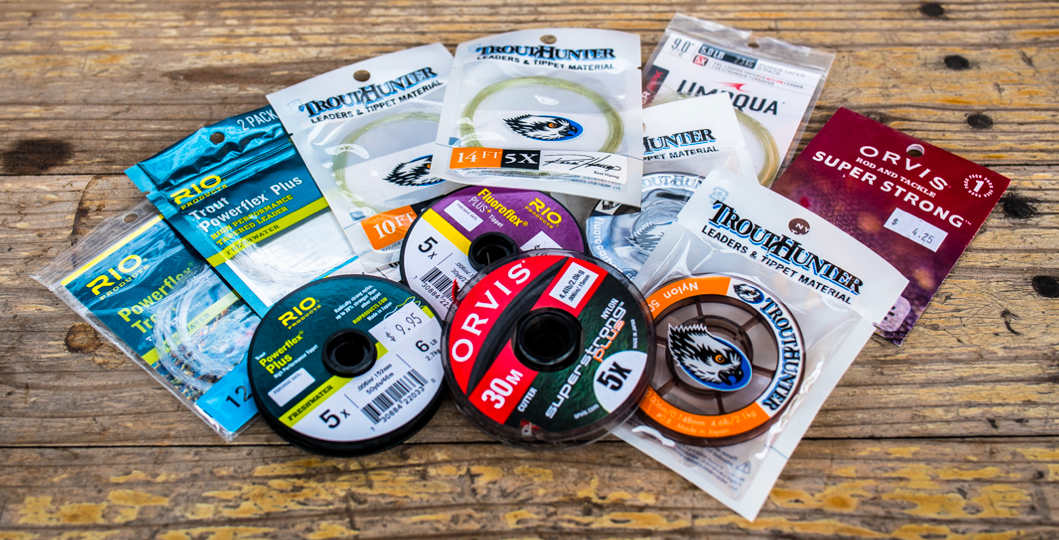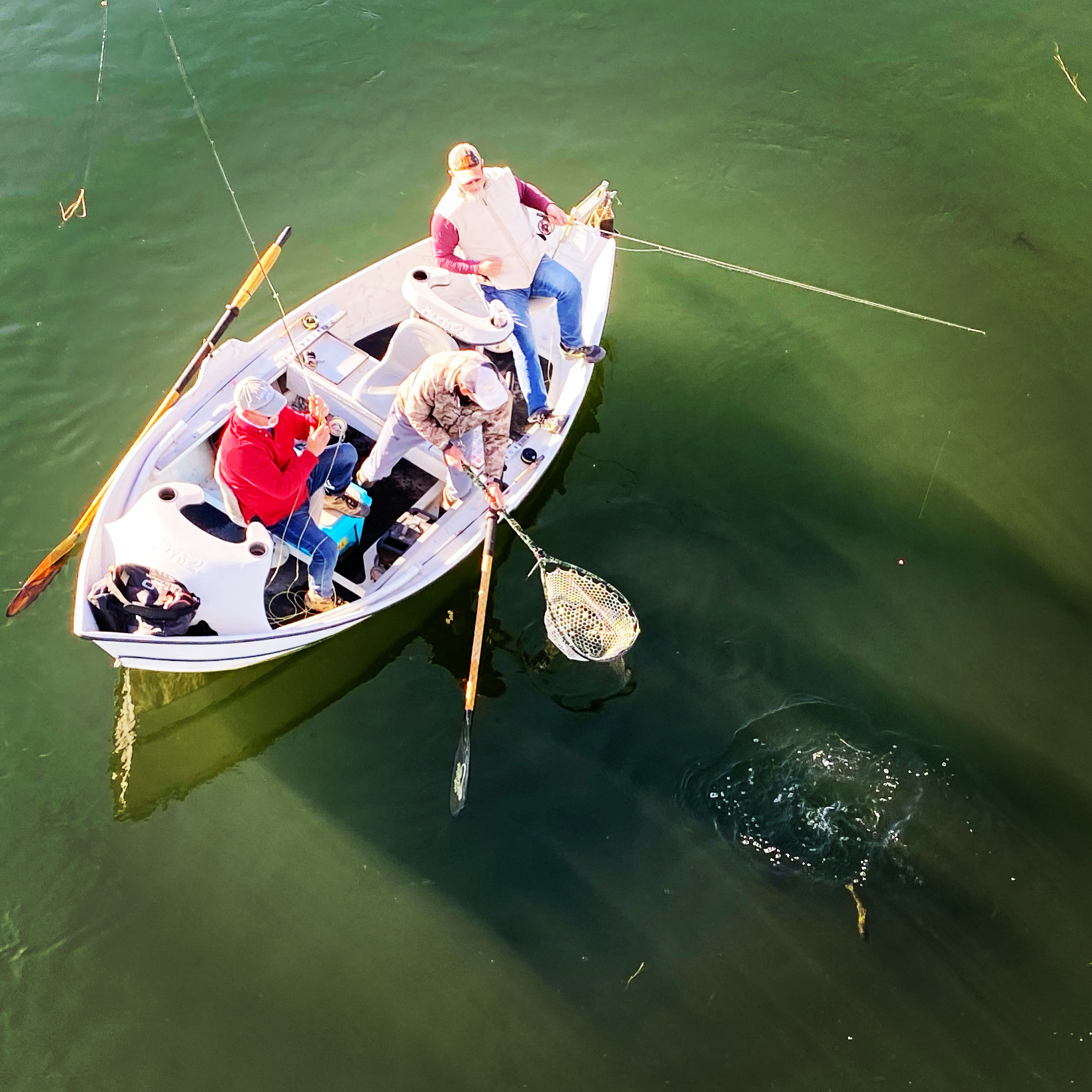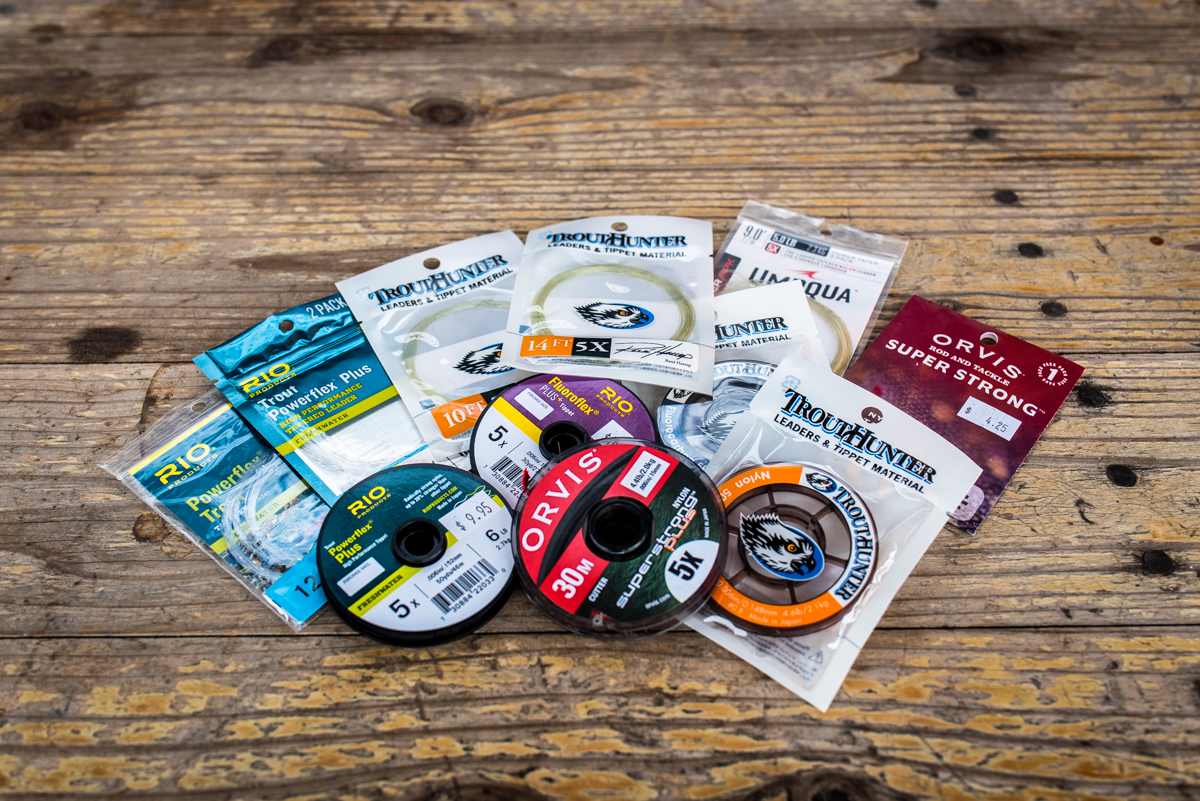Talking About Tippet, Leader, etc
Ed Note: Steve Collie speaking to you today about way deeper topics than SOL generally does. So soak this in folks as content this good only graces these pages occasionally. Steve educates us today with talk about tippet and leader. I love this info. And many of you may as well. Thanks Steve, appreciate you tasing the bar on good content today on the Headhunters Blog.
MONOFILAMENT
Monofilament is defined as “a single strand of manmade fiber”. The tippet and leader we use for trout fishing (with the exception of a furled leader) is monofilament and is either composed of the material nylon or fluorocarbon.
WHERE DOES IT COME FROM?
The vast majority of monofilament used in flyfishing is sourced from factories in Japan, with lesser amounts coming from Germany, South Korea, and China. Pellets of plastic are melted and extruded into monofilament. This monofilament then undergoes a process known as “annealing”, it is heated and stretched which results in the molecules aligning themselves into a chain. Annealing strengthens the monofilament as well as making it more supple.
Most manufacturers list the dry tensile strength of monofilament on spools. Tensile strength is the ability of a material to resist a force that tends to pull it apart. Knot strength is more important to the angler then tensile strength because knots tend to be the weak link in the system. Unfortunately, measuring knot strength involves too many variables for most manufacturers to list a number on a spool or package.
SO IS IT ALL THE SAME S@$T?
If only a few factories produce all the monofilament, is it all the same stuff with different labels? Short answer: NO. The formula of the base plastic material, the annealing process and postproduction coatings applied to the monofilament differ from one brand to another. Bulk spools of material undergo extensive testing at labs in North America to determine which formulas satisfy the goals of the wholesale buyer. Postproduction processes such as coatings applied to the line can also take place at facilities in North America. Coatings applied to the line can increase resistance to UV degradation, decrease friction, decrease water absorption (both of which can increase knot strength) and increase abrasion resistance.
NYLON VS FLUOROCARBON
In this section I will try to explain some of the differences between nylon and fluorocarbon, hopefully shedding some light on why an angler would choose one over the other in different situations.
Nylon absorbs water and this decreases its strength over time, while fluorocarbon does not absorb water. Coatings applied to Nylon post manufacturing in North America can decrease water absorption in Nylon and thereby increase “wet knot strength”.
Nylon tends to be more supple and stretches more than fluorocarbon given the same diameter.
Nylon appears to win in the cost per foot category. Nylon also has a shelf life (naturally gets weaker over time). The spool of 1X fluorocarbon you bought to fish streamers 3 times a year will still be strong when you get to the last of it several years later. Nylon loses strength over time and needs to be replaced, take this into consideration when comparing the cost of one versus the other.
Exposure to UV and high heat will increase the rate of degradation of Nylon. Fluorocarbon will not degrade appreciably with exposure to heat, fluorescent light, sunscreen, bug spray or UV.
Fluorocarbon has a higher density than Nylon and will sink faster. It also wins in the abrasion resistance category. These attributes can make it a desirable material for fishing nymphs or streamers.
The “Refractive Index” is a measurement of how a material bends incoming rays of light. Fluorocarbon has a refractive index closer to water than Nylon, this leads to claims that it is “invisible to fish”. The refractive index of water =1.33, Fluorocarbon =1.42 and Nylon =1.62. In my opinion trout in slower moving water can see tippet no matter what the material or diameter, they just choose to ignore it under certain circumstances. I know guides who use Nylon exclusively and have many pictures of huge fish being held by happy clients.
Fluorocarbon takes much longer to break down in nature due to its higher resistance to UV. Water is a good filter for UV light, if your tippet is hanging off a fly 6 feet deep in the river Nylon will probably not degrade all that much faster than Fluorocarbon. Above water either material takes a few to several human lifetimes to break down, even then it simply breaks down into smaller pieces of plastic. Please take the time to properly stow away and dispose of used monofilament. Each boat ramp on the Missouri has a blue collection tube for your use.
LEADER VS TIPPET
Tippet comes on spools as a single diameter. Different lengths and diameters of tippet can be joined together to build a knotted tapered leader. Tapered knotless leaders can also be purchased. These are a single piece of extruded tapered monofilament that comes in defined lengths and ends in a designated diameter (4X, 5X, etc.). Probably the most popular configuration is to buy a tapered leader of a certain length and then extend that with a section of tippet. After several fly changes a new section of tippet is tied on, this preserves the length of the leader.
Tolerances in the manufacturing of tippet are higher than in the manufacturing of leaders simply because extruding a taper is more complicated than extruding a constant diameter. I other words, the end of a 5X leader could be smaller (or larger) then 5X. Extending a leader with the same diameter tippet could be a bad idea. In this example one solution is to purchase a 4X leader and extend with 5X tippet, alternately, cut back a 5X leader 18-24 inches and then tie on 5X tippet.
NOTE ON KNOTS
Fly anglers are grudgingly familiar with the “wind knot” or bad casting knot. This is basically an overhand knot in your tippet and can reduce its breaking strength by some measurements up to 45%. A wind knot in your leader may not be a dire emergency, depending on where it is, the tippet may still be the weak link in the chain. A wind knot in smaller diameter tippet needs to be dealt with immediately if you plan on landing the next fish you hook.
Knot “architecture” has a big influence on breaking strength and the wind knot illustrates this well. The greater the force on the tag (fly) end of the tippet the greater the constrictive force applied around the standing (rod) end of the line. The knot is “strangling” the standing line and can cut into it, reducing its diameter and weakening it. The result is loss of tippet strength throughout the day from the pulling force of fish and/or snags.
THE MAGIC KNOT
Got you. I don’t know what the “best” knot is out there and neither do the manufacturers. Knots are tied by humans and the number of variables is too great to set up one definitive test to find the “one” perfect knot for every application. Being familiar with the knot, thorough lubrication, slowly and smoothly drawing the knot together to decrease heat caused by friction are all important points of knot tying.
I also mentioned “knot architecture” above, some people prefer to use a “jam” type of knot believing it is stronger over time. Examples include but are certainly not limited to the Uni-Knot or Pitzen (Eugene Bend, Click Knot, 16/20 Knot).
Bottom line, the best knot is the one you have confidence in and can tie correctly every time while imparting the least amount of friction.





4 Comments.
[…] Mark Raisler Fly Fishing Gear No Comments […]
Thankyou Mark, for a fantastic article on monofilament and knots. Well done.
Sorry,Thankyou Steve Colle.
Meant to thank Steve Collie too.